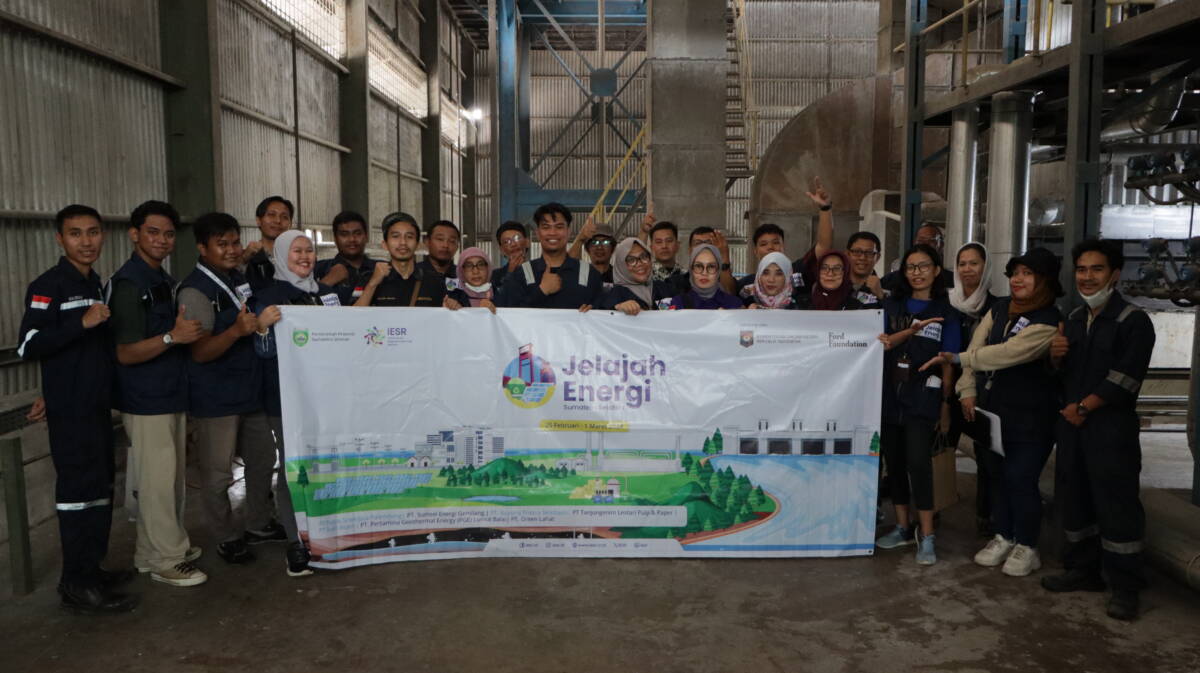Palembang, February 27, 2024 – The Institute for Essential Services Reform (IESR) and the Energy and Mineral Resources Agency (ESDM) of South Sumatra Province jointly organized an event called Jelajah Energi to explore the potential and implementation of renewable energy in the South Sumatra region. The event was held from Monday, February 26, to March 1, 2024. On the second day of Jelajah Energi, the team visited Jakabaring to observe the utilization of solar energy and PT Buyung Poetra Energi to witness the use of biomass.
Solar PV Jakabaring is a project established through a partnership between Indonesia and Japan under the Joint Crediting Mechanism (JCM)—the project aimed to fulfill the electricity requirements during the 2018 Asian Games. The total investment value for the project was USD 139 million, with most of the funds coming from private Indonesian investment and subsidies from the Japanese Government.
Ali Kartiri, the Operations Manager of PT Sumsel Energi Gemilang, is responsible for overseeing the Jakabaring solar power plant. According to Kartiri, the South Sumatra Provincial Government took the initiative to build this solar power plant. In collaboration with Sharp Japan, the project secured subsidies from the Japanese Government. These subsidies were primarily allocated for funding technology and infrastructure that supports greenhouse gas emissions reduction targets.
“The Solar PV Jakabaring has a peak electrical energy production capacity of up to 2 Megawatts (MW) when the sunlight is optimal. However, during the rainy season, the plant’s productivity is sometimes affected, and it can only absorb about 10% of the solar energy. The plant has been successfully operational since 2018 and integrated into the PLN grid, contributing renewable energy to the local community.,” Ali said.
Meanwhile, The Jelajah Energi team recently visited PT Buyung Poetra Energi (BPE), a company that established a biomass power plant (PLTBm) to preserve the environment. The plant uses rice husks as fuel to generate electricity, which was previously considered waste. Candra Priansyah, the Operations Supervisor of PT BPE, explained how this approach has turned an environmental problem into a valuable energy source.
“Waste produced during rice milling in the form of husks will be burned in a boiler to generate steam. This steam will then be transferred to a steam turbine that will power a generator. The power plant requires 4 tons of husks per hour and has a capacity of 3 MW. However, not all the chaff produced is used for the power plant. Only about 70% of the available supply is used for generating power, while the remaining 30% is used for heating and drying rice grains,” Candra said.
Candra said that all chaff waste produced by PT BPE is being utilized environmentally friendly, and none of it is being disposed of into the environment. Moreover, the electricity generated from this PLTBm is sufficient to meet the company’s operational requirements. Candra hopes this power plant can help reduce the amount of rice husk waste, particularly from factories in South Sumatra where rice husks have been thrown away or simply burned. Candra’s team has even developed a machine to compress rice husk by-products into pellets at the Subang Factory located in West Java. These pellets are then sold to cement factories as fuel.
During the visit, it was evident that South Sumatra is dedicated to developing renewable energy sources to tackle global environmental challenges. South Sumatra is making significant progress towards a more sustainable and eco-friendly future by working with the public and private sectors and receiving support from foreign governments.

